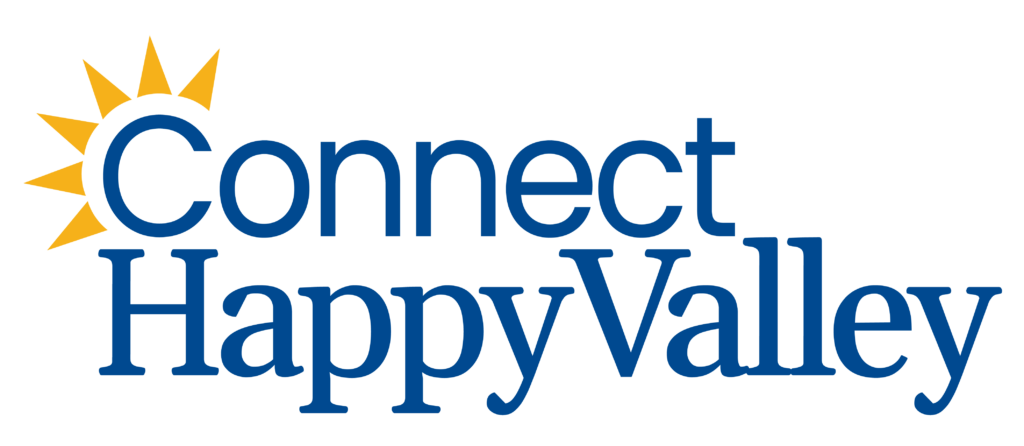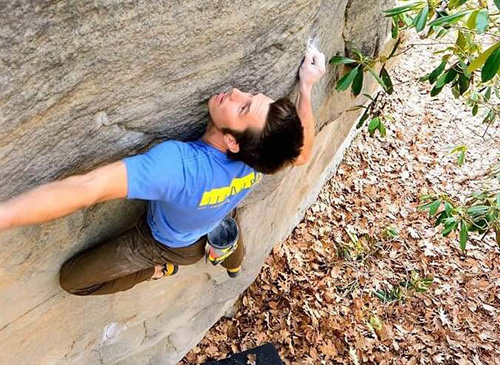Penn State researchers Stephen Lynch (left) and David Williams (right) are working to accelerate designs for higher-performing, more efficient and safer aircrafts for the U.S. Navy. IMAGE: TYLER HENDERSON, PENN STATE
Dr. David Williams heads a team of researchers in the Penn State Department of Mechanical Engineering, along with Dr. Stephen Lynch, that recently received $541,167 to accelerate the designs of higher-performing, more efficient and safer aircraft for the United States Navy. We recently talked to him about his team’s research on freestream turbulence, his love of teaching and how he started cheering for Penn State over Michigan.
HappyValley Industry: Can you tell us a little bit about this research project, and why it’s so important on a global scale?
Williams: The grant will fund exploration and more understanding of the effects of freestream turbulence on tip vortex breakdown and decay mechanisms.
When the air flows over an aircraft’s wings, this creates a vortex that circles the wingtip which are often called wingtip vortices. A similar effect, tip vortices, can also be created over the broader surface of the wings with vortex generators or inside the inlets of aircraft engines.
In normal conditions, these tip vortices are fairly predictable and taken into account in aircraft design, but the Navy isn’t always operating in normal conditions. In unconventional situations like a fighter jet taking flight from a ship navigating rough seas, the chaotic freestream turbulence can result in unstable and possibly dangerous tip vortices. We want to have a better understanding about turbulence so engineers can design for better aircraft performance.
Many planes and helicopters flying today were designed 10-20 years ago. There’s a lag in production that can sometimes take decades. Aircraft companies tend to be reticent to change — new designs cost a lot of money and mistakes could cost human life. Commercial companies do not have much incentive to innovate, but the military does. They desire more performance and ultimately to be the last dog in the fight. There is incredible pressure to innovate.
Much of today’s aircraft were designed using older technology and there has been a magnificent increase of computational power since then. Part of our research is using those computational tools to look at the effects that freestream turbulence has on jet engines, like loss or performance and local structural damage.
HappyValley Industry: How do you envision your research impacting/changing Navy aircraft?
Williams: I envision our research creating software tools and practical rules of thumb that will allow for more efficient design. We want to ‘widen the envelope of performance,’ which basically means to increase the range of conditions in which the engine can safely operate. We want to allow a fighter jet to take off from an aircraft carrier on a stormy night. We want to help a helicopter take off in the middle of a sandstorm.
The best case outcome would be that within five years, we’ve delivered tools directly into the hands of engineers who design craft and engines, and increase that flight envelope.
HappyValley Industry: What’s your story? What inspired you to follow this line of research?
Williams: I was an undergrad at the University of Michigan. I’d always been good at math and science, so engineering was a natural path for me, but I wasn’t sure what kind of engineering I wanted. One of my engineering friends invited me to join one of his aerospace classes, and the rest is history. I’ve never regretted it. I’ve always been so fascinated by high performance, by designing things that are right on the edge of what is humanly possible.
I grew up outside of Detroit and I always thought cars were boring. But seeing an F-22 Raptor take flight? I remember thinking, “I don’t know what that does, but I want to design that.”
HappyValley Industry: What led you to choose to conduct this research at Penn State specifically?
Williams: After my PhD program, I worked at Boeing, but after a few years, I wanted to explore more far-out research and I really wanted to teach. I’ve always been familiar with Penn State. When I was a kid, I wasn’t allowed to watch much TV, so we would listen to Penn State-Michigan games on the radio. When I was older, I learned more about Penn State’s academic reputation. The strength of the college of engineering really drew me. Plus, the mascot’s pretty reasonable [laughs]. It was an easy choice for me to come here.
HappyValley Industry: Would you encourage other researchers to make their home in Happy Valley, and why?
Williams: If you are like me and grew up near a major metropolis, I will say that it’s a bit of an adjustment. But after being here for five years, I’ve really grown to love it. The town itself is quite nice — it has its own culture and great restaurants. There is so much natural beauty to enjoy. Great place to come out and get research done. I certainly wouldn’t say it’s for everyone, but it’s grown on me and I appreciate it.
HappyValley Industry: Is there anything else that you would like to add?
Williams: I am just amazed at how devoted Penn State alumni are to their alma mater. There is such a strong Penn State brand, and that’s an incredible thing to see. A lot of schools don’t have the amount of pride that Penn State does.
There’s a lot of incredible talent within Pennsylvania. These kids are smart. I’m grateful that people send their kids here so they can make really important scholarly impacts and continue to raise the academic prestige of the school. Ultimately, it comes down to the students. I became a professor because of the students, and I’ve been rewarded many times over. I’m very privileged.






